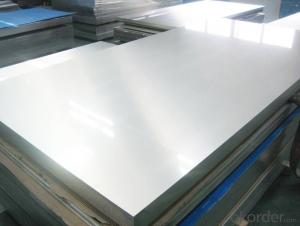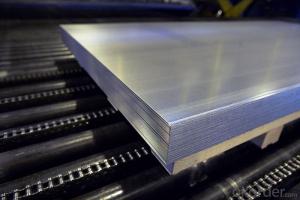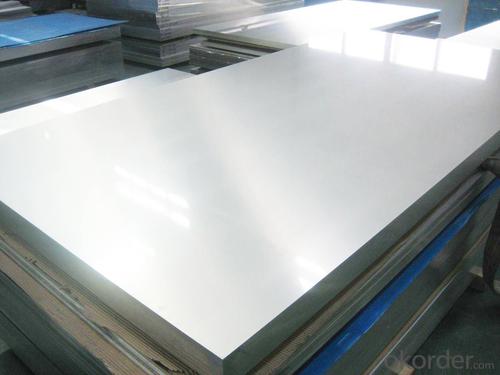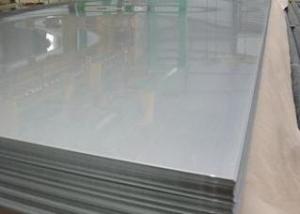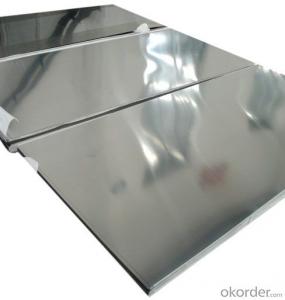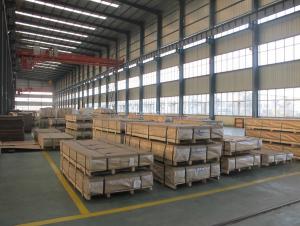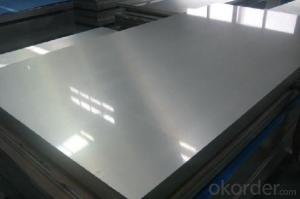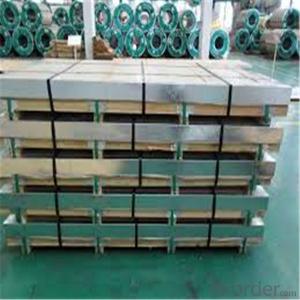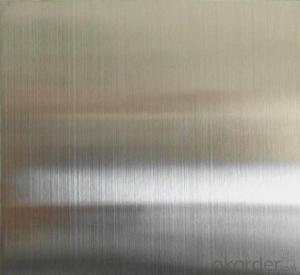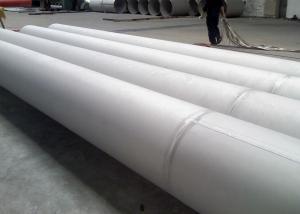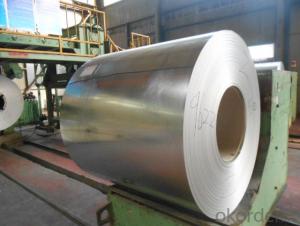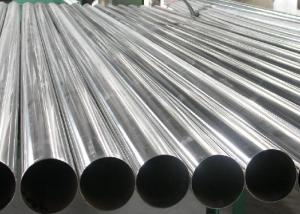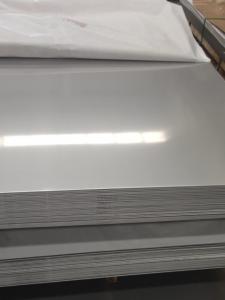Stainless Steel Sheet Plate 430 for Automobile
- Loading Port:
- China main port
- Payment Terms:
- TT OR LC
- Min Order Qty:
- 50 m.t.
- Supply Capability:
- 10000 m.t./month
OKorder Service Pledge
OKorder Financial Service
You Might Also Like
Specification
Stainless Steel Sheet/Plate 430 for Automobile
Description:
304 stainless steel is the most widely used in the 300 series stainless steel. Its anti-corrosion property is stronger than the 200-series
stainless steel, but the anti-acid property is worse than 316. 304 stainless steel have a good resistance in high temperature and the
excellent corrosion resistance. 304 stainless steel is more expensive than 201, cheaper than the 316.
1. Commodity: 304 Stainless Steel
2. Technique: Cold Rolled/hot rolled Stainless Steel
3. Grade: 304 Stainless Steel
4. Type: Stainless Steel Sheet/coil
5. Finish: 2B/Ba/8K/Emboss/Etch
6. Edge: mill edge /silted edge
7.Size:1219mm*2438mm,1219mm*3048mm,or as customized
Main Features:
•Escalator, Elevator, Doors
•Furniture
•Production tools, Kitchen appliances, freezers, cold rooms
•Auto Parts
•Machinery and Packaging
•Equipment and Medical devices
•Transport system
Specifications:
Description | steel sheet,hot rolled steel sheet,cold rolled steel sheet, steel sheet,sheet,steel plate |
Standard | ASME, ASTM, EN ,BS,GB,DIN, JIS etc |
Surface treatment:
Surface finish | Characteristics and application |
2B | The surface brightness and flatness of no2B is better than no2D. then through a special surface treatment to improve its mechanical properties,No2B could nearly satisfy comprehensive uses. |
No.1 | Polished with abrasive belt of grit#100-#200, have better brightness with discontinuous coarse stria, used as inner and external ornaments for building, electrical appliances and kitchen utensils etc. |
No.4 | Polished with abrasive belt of grit #150-#180,have better brightness with discontinuous coarse stria, but thinner than No3, are used as bathtub buildings inner and external ornaments electrical appliances kitchen utensils and food processing equipment etc. |
HL | Polished with abrasive belt of grit #150-#320 on the NO.4 finish and has continuous streaks, mainly used as buildings ornaments elevators, door of building, frontal plate etc. |
BA | Cold rolled, bright annealed and skin-passed, the product have excellent brightness and good reflexivity like mirror, kitchen apparatus, ornament etc. |
8K | The product have excellent brightness and prefer reflexivity can to be the mirror. |
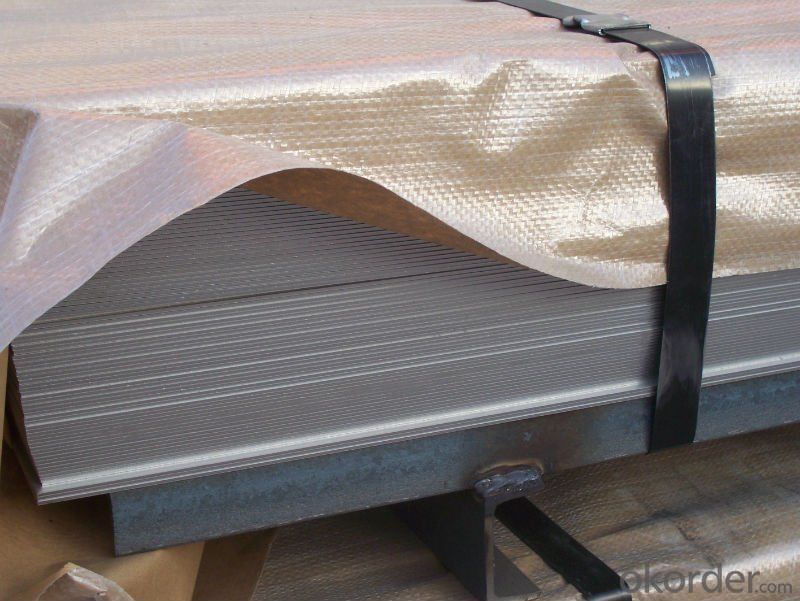
- Q: Can stainless steel sheets be bent?
- Yes, stainless steel sheets can be bent. Stainless steel is a versatile material that can be easily formed into various shapes and configurations, including bends. The ability to bend stainless steel sheets is dependent on the thickness and composition of the material. Thinner sheets are generally more flexible and easier to bend, while thicker sheets may require specialized equipment and techniques. It is important to note that the bending process may cause the stainless steel sheet to lose some of its strength and durability, so careful consideration should be given to the specific application and requirements before attempting to bend stainless steel sheets.
- Q: How thick is 10gauge in stainless steel plate?
- The word "gauge" is interesting. This term is often seen in articles reading about metal roofs. It is not a unit of measurement, but a standard measure of width or thickness.
- Q: Are stainless steel sheets available in different finishes?
- Yes, stainless steel sheets are available in different finishes. Stainless steel is a versatile material that can be finished in various ways to achieve different appearances and textures. Some common finishes include brushed, mirror, satin, and textured finishes. Each finish has its unique aesthetic appeal and can be chosen based on the desired look and application requirements. The choice of finish can also impact the stainless steel sheets' resistance to corrosion, staining, and scratching. Therefore, manufacturers offer a variety of finishes to cater to different customer preferences and specific project needs.
- Q: What's the drill for stainless steel?
- Stainless steel is characterized by high toughness, easy to stick the knife, so requires higher hardness of the drill bit, surface finish is better, the drill tip angle than the ordinary drill (130--135 degrees). At the same time, cooling should be sufficient
- Q: Can stainless steel sheets be used for jewelry?
- Yes, stainless steel sheets can be used for jewelry. Stainless steel is a popular material choice in the jewelry industry due to its durability, resistance to rust and corrosion, and affordability. It is commonly used to create various types of jewelry, including rings, bracelets, earrings, necklaces, and pendants. Stainless steel sheets can be shaped, cut, and polished to create unique and stylish jewelry designs. Additionally, stainless steel jewelry is hypoallergenic, making it an excellent option for individuals with sensitive skin. Overall, stainless steel sheets are a versatile and practical material for creating beautiful and long-lasting jewelry pieces.
- Q: Can stainless steel sheets be formed into different shapes?
- Yes, stainless steel sheets can be formed into different shapes. Stainless steel is a versatile material that can be easily manipulated through various forming processes such as bending, rolling, and stretching. These processes allow stainless steel sheets to be shaped into various forms, including curves, angles, cylinders, and complex geometries. The malleability and ductility of stainless steel sheets make them ideal for applications that require customized shapes and designs. Additionally, stainless steel's resistance to corrosion and high temperatures make it a popular choice for shaping into different forms in industries such as architecture, construction, automotive, and manufacturing.
- Q: Are stainless steel sheets resistant to crevice corrosion?
- Yes, stainless steel sheets are generally resistant to crevice corrosion. Crevice corrosion occurs in confined spaces, such as crevices or gaps between two surfaces, where oxygen and other corrosive agents are limited. Stainless steel sheets are made primarily of iron, chromium, and other alloying elements that create a protective oxide layer on the surface, preventing the penetration of corrosive agents. This oxide layer acts as a barrier, making stainless steel highly resistant to crevice corrosion. However, it's important to note that the resistance to crevice corrosion can vary depending on the specific grade and composition of the stainless steel, as well as the environmental conditions it is exposed to.
- Q: What is the thickness range for stainless steel sheets?
- The thickness range for stainless steel sheets can vary depending on the specific grade and application. Generally, stainless steel sheets are available in thicknesses ranging from 0.4mm to 6mm. However, for specialized applications, thinner or thicker sheets may be required. It is important to consult with a supplier or refer to industry standards to determine the appropriate thickness range for a specific project or application.
- Q: Can stainless steel sheets be used for soundproofing?
- Typically, stainless steel sheets are not used alone for soundproofing. Despite being renowned for durability and resistance to corrosion, stainless steel lacks substantial soundproofing abilities. Nevertheless, stainless steel sheets can be integrated into soundproofing systems either as a component of a composite structure or in combination with other soundproofing materials to amplify their overall effectiveness.
- Q: How do you prevent galling when using stainless steel sheets?
- To prevent galling when using stainless steel sheets, there are several measures you can take: 1. Lubrication: Apply an appropriate lubricant or anti-seize compound on the contact surfaces to reduce friction. This helps to create a barrier between the stainless steel sheets and prevent them from sticking and galling. 2. Proper surface finish: Ensure that the stainless steel sheets have a smooth surface finish. Rough or uneven surfaces can increase the risk of galling. Consider using sheets with a polished or finely ground finish to minimize the chance of galling. 3. Control the contact pressure: Avoid excessive pressure when using stainless steel sheets. Excessive pressure can generate heat and increase friction, leading to galling. Adjust the pressure to a level that allows smooth movement without causing excessive friction. 4. Minimize sliding or rubbing: Reduce the amount of sliding or rubbing between stainless steel sheets. If possible, use rolling or lifting techniques instead of dragging or sliding the sheets across each other. This helps to minimize the risk of galling by reducing the contact area and friction. 5. Use compatible materials: When using stainless steel sheets in contact with other materials, ensure they are compatible. Some materials, such as aluminum or certain coatings, can promote galling when in contact with stainless steel. Choose materials that are less prone to galling or use protective coatings to prevent direct contact. 6. Avoid excessive heat: Excessive heat can increase the likelihood of galling in stainless steel sheets. Ensure that the temperature is controlled and does not reach levels that can cause the sheets to heat up significantly. This can be achieved through proper cooling methods or by using heat-resistant materials if necessary. By following these preventive measures, you can significantly reduce the risk of galling when using stainless steel sheets, ensuring smooth operation and prolonging the lifespan of the sheets.
Send your message to us
Stainless Steel Sheet Plate 430 for Automobile
- Loading Port:
- China main port
- Payment Terms:
- TT OR LC
- Min Order Qty:
- 50 m.t.
- Supply Capability:
- 10000 m.t./month
OKorder Service Pledge
OKorder Financial Service
Similar products
Hot products
Hot Searches
Related keywords
